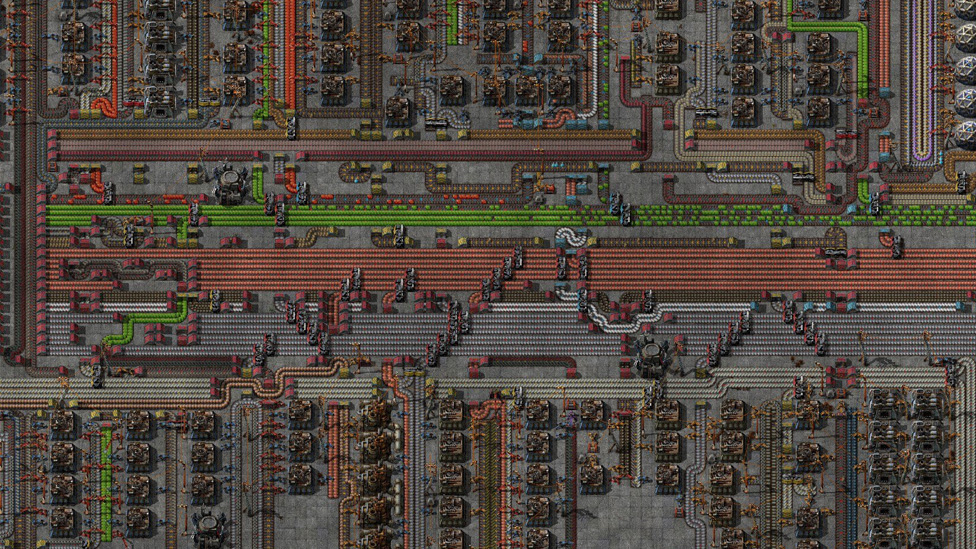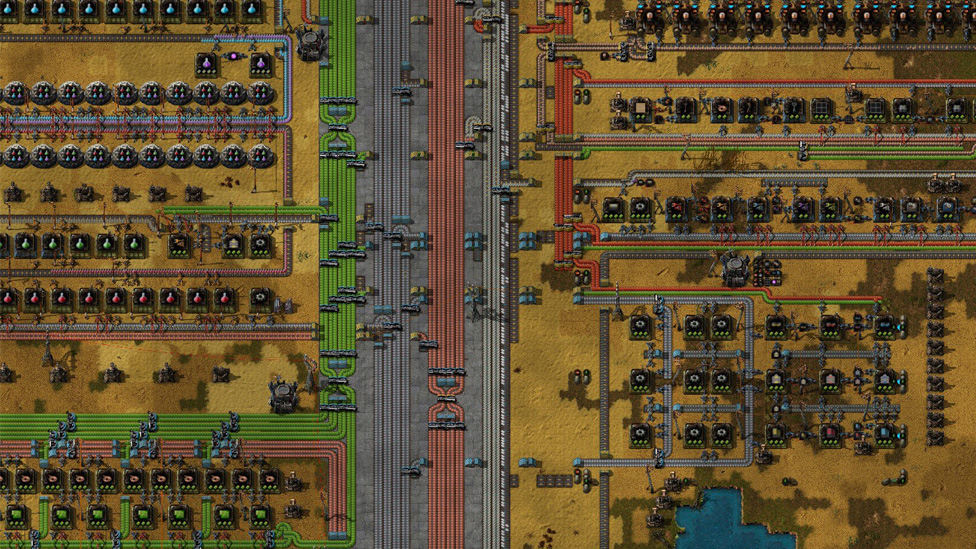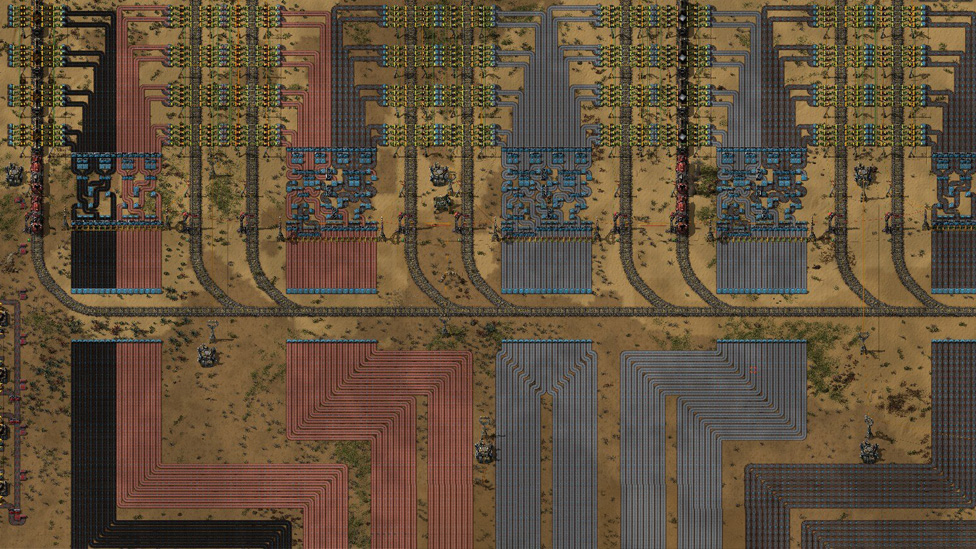Factorio main bus
Visualize this bus as a main artery snaking its way through your factory, carrying lifeblood, ferrying down a pre-determined path. Assembly machines gain access to this bus to obtain the resources that they need to make things. This way is more straightforward, makes expansion easier, and helps you avoid a spaghetti factory—the bane of new players.
This guide goes much farther down the rabbit hole of Factorio's main buses, equipping the reader with the knowledge of the design and use of this powerful strategy. This document will provide the most critical factors and design principles, followed by considering challenges and finishing up with common questions.

Make Your Own Factorio Server
Designing Your Main Bus
Building an effective main bus involves several crucial considerations:Resource Selection
Identify the essential items running down the middle of your factory. These will generally be iron plates, copper plates, green circuits, red circuits, and plastic. Steel plates, gears, and coal are other common additions.
Belt Choice
Yellow transport belts are a good starting place for most small factories. However, as your base expands in size, you might want to look at upgrading to Red Transport Belts or even Blue for higher throughput.
Lane Allocation
Each resource has one or more dedicated lanes for that resource. The standard configuration is four lanes for iron and copper, two lanes for green circuits, and one lane for each of the other resources. Also, in designing, ensure that your design has space for expansion by having some lanes empty.
Leaving Room
Don't forget to include the space for the splitters and the underground belts pulling resources off the bus to feed into the assembling machines.
One-Way Traffic
Maintain a consistent flow direction for materials on the bus. This prevents bottlenecks and ensures smooth operation.
Building and Utilizing Your Main Bus
Now that you have a blueprint for your main bus, let's get down to construction:
Route Planning
You may now plan your route; find an extended, open area on the map for the bus to fit and also for future expansion.
Setup Smelters
Set up smelter arrays at one end of the bus to feed iron and copper plates.
Underground Belts
Put your most frequently used underground belts according to what you need to have a cleaner point of how your resources get allocated. Put underground belts at points that will promote a tangle-free, neat arrangement.
Tap from the Main Bus Using Splitters
In designing your factory, position the assembling machines close to the main bus. Use the splitters to tap into the bus to draw the resources necessary for a given line of production. Remember to bring efficiency to the high-end game by grouping similar resources machines use.

Why settle for ordinary gaming servers when you can have the best? At ScalaCube, we take pride in offering Factorio hosting solutions that exceed expectations. Join thousands of gamers worldwide who trust us for their hosting needs and elevate your gaming experience to new heights. Factorio hosting
Addressing Common Challenges
Even the most meticulously planned main bus can encounter problems. Here's how to tackle some common roadblocks:Throughput Issues
If all the buses on the bus are packed, either upgrade the bus to higher tiers or add more lanes for critical resources.
Lack of Space
If space becomes a constraint, one can try alternate ways, such as using trains for transporting resources over more considerable distance lengths or even switching to a bot-based logistics network in the later stages of the game.
Balancing Act
Just make sure that as your factory grows, the inflow of materials on the bus keeps up with demand. Monitor the resource levels and balance production, or add more lanes if required.

Is a main bus always the best option?
The main bus works well for well-organized, planned factories, but for megabases or highly complex setups of production, either trains or bots might offer a more scalable solution.
What happens if I run out of space for my main bus?
You could scale up to higher throughput belts, add lanes for critical materials, or consider switching to a train-based logistics network for long-haul transport.
How do I ensure enough resources are available on the bus?
Monitor your main bus and your resource levels. If you see low numbers on your resources, either adjust the numbers running between your smelter arrays and add more lanes to the bus to increase the carrying capacity for that resource.
When should I consider switching from a main bus to another strategy?
The main bus is quite a powerful tool but likely not scalable to the very most significant or most intricate factories. If the base gets complex, then in the later game, consider using trains for bulk transport or bots for on-site logistics.
Conclusion
Factorio's main bus is an organized and practical approach to resource management, more so if beginners and intermediate players are implementing it. Follow the principles that are set in this book to design and implement a main bus and optimize your factory working fast and past all the challenges that are presented within Factorio. Remember, planning, organization, and adaptation are the keys to success.Play Factorio on your game server smoothly without any hassle with ScalaCube! We provide stable and top-performance solutions in hosting Minecraft servers, capable of withstanding even the most powerful Factorio factories. With ScalaCube, you can concentrate on building your industrial empire without interruptions from server downtime or lag. So, fire up Factorio, unleash your creativity, and conquer the world of automation—all this hassle-free; host your server with ScalaCube today.
Make Your Own Factorio Server
Copyright 2019-2025 © ScalaCube - All Rights Reserved.